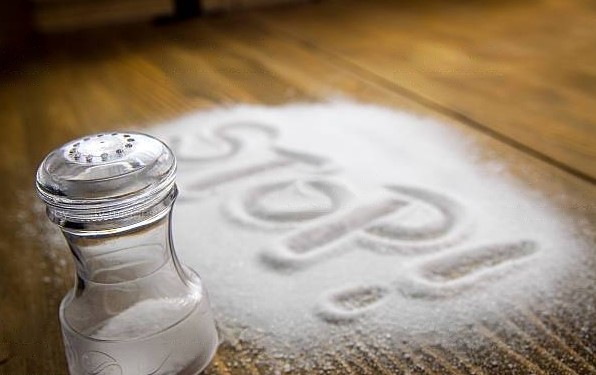The Effects of Sodium on The Body
In today’s fast-paced world, where processed and convenience foods have become the norm, it’s crucial to understand the sodium effects on the body. As an expert cardiologist who specializes in the risks associated with salt consumption, I want to shed light on the importance of maintaining a healthy balance and provide valuable insights into the effects of sodium on our overall well-being. In this comprehensive article, we will explore the detrimental consequences of excessive sodium intake, the link between sodium and hypertension, and practical steps to reduce salt consumption.
Understanding Sodium: The Silent Culprit
Sodium, an essential mineral, plays a vital role in maintaining fluid balance and nerve function in the body. However, consuming too much sodium can lead to significant health problems. Many people are unaware of the hidden sodium lurking in processed and restaurant foods, which contributes to exceeding the recommended daily intake.
The Role of Sodium in Hypertension
High blood pressure, or hypertension, is a leading cause of cardiovascular disease. Sodium intake has a direct impact on blood pressure levels, as excess sodium causes the body to retain water, increasing blood volume and putting additional strain on the heart. Understanding the link between sodium and hypertension is crucial for individuals with cardiovascular conditions or those at risk.
How Excess Sodium Affects Blood Pressure
When we consume excess sodium, the kidneys work harder to remove the surplus from the body. To achieve this, the kidneys retain water, leading to increased blood volume and elevated blood pressure. Over time, this continuous strain on the cardiovascular system can result in hypertension, heart disease, and stroke. It is essential to recognize the long-term effects of excessive sodium intake and take proactive measures to maintain healthy blood pressure.

Hidden Sources of Sodium
While it’s easy to identify salty snacks and processed foods as culprits for high sodium intake, there are several hidden sources that can catch us off, guard. Understanding these sources will empower individuals to make informed choices when it comes to their dietary habits.
Sodium in Processed Foods
Processed foods such as deli meats, canned soups, and frozen meals often contain excessive amounts of sodium for flavor enhancement and preservation purposes. These hidden sources can contribute significantly to our daily sodium intake without us realizing it. Opting for fresh, whole foods and preparing meals at home can help mitigate sodium intake.
The Sneaky Sodium in Restaurant Meals
Eating out is a common practice for many individuals, but it comes with hidden risks, especially regarding sodium intake. Restaurants often use high amounts of salt to enhance the taste of dishes. Even seemingly healthy options like salads or grilled chicken can be loaded with sodium due to dressings, sauces, and seasoning. Being mindful of sodium content when dining out is essential for maintaining a heart-healthy diet.
Reducing Sodium Intake: Practical Steps for a Healthy Lifestyle
Reducing sodium intake is an essential step toward improving cardiovascular health and preventing the onset of hypertension. By adopting a few simple habits and making informed choices, individuals can significantly lower their sodium consumption and protect their hearts.
Reading Food Labels
One of the most effective ways to monitor sodium intake is by reading food labels carefully. Look for the sodium content per serving and aim for products with lower sodium levels. Additionally, keep an eye out for hidden sodium-containing ingredients such as monosodium glutamate (MSG) or sodium nitrate.
Cooking at Home: Taking Control of Sodium Intake
Preparing meals at home gives you full control over the ingredients and allows you to reduce sodium content significantly. Experiment with herbs, spices, and other flavor enhancers to replace salt and create delicious, heart-healthy dishes. Discovering new recipes and involving loved ones in the cooking process can make it an enjoyable and rewarding experience.
Incorporating Fresh and Whole Foods
A diet rich in fresh fruits, vegetables, lean proteins, and whole grains provides essential nutrients while naturally keeping sodium levels in check. These nutrient-dense foods not only support heart health but also contribute to overall well-being. Opt for fresh produce and unprocessed ingredients whenever possible to minimize sodium intake.
Limiting Processed and Packaged Foods
To reduce sodium intake, it’s crucial to limit the consumption of processed and packaged foods. These convenience foods often contain high levels of sodium to enhance flavor and prolong shelf life. Gradually replace these items with healthier alternatives, such as homemade snacks or pre-packaged options labeled as low-sodium or sodium-free.
Choosing Low-Sodium Alternatives
Another effective strategy is to choose low-sodium alternatives for everyday staples. For example, opt for low-sodium broths, condiments, and canned goods. These options provide flavor without the excessive sodium content, allowing individuals to maintain a heart-healthy diet while still enjoying their favorite foods.
Dining Out with Care
When dining out, it’s essential to be proactive in making heart-healthy choices. Requesting dishes to be prepared with less salt or asking for dressings and sauces on the side can significantly reduce sodium intake. Additionally, opting for grilled, steamed, or baked options over fried or breaded choices can make a substantial difference.
Seeking Support and Accountability
Changing dietary habits can be challenging, especially when it comes to reducing sodium intake. Seeking support from healthcare professionals, joining support groups, or involving friends and family can provide motivation and accountability. Sharing experiences, challenges, and successes can make the journey toward a heart-healthy lifestyle more manageable and enjoyable.
Conclusion
The effects of sodium on the body cannot be underestimated, especially in individuals with hypertension and cardiovascular conditions. By understanding the link between sodium and blood pressure, recognizing hidden sources of sodium, and implementing practical steps to reduce intake, individuals can take control of their heart health. Embracing fresh and whole foods, reading food labels, and making informed choices when dining out are key elements in maintaining a balanced and low-sodium diet. Remember, every small change contributes to significant long-term benefits for your overall well-being. Take charge of your heart health today and embark on a journey towards a healthier, sodium-conscious lifestyle.
This content is published for informational purposes only and cannot replace the work of a professional. We recommend that you consult with your trusted specialized professional.



